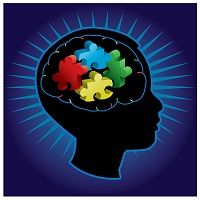Article
Impact of Pivotal Response Treatment Package for Children with Autism
Author(s):
A 24-week randomized clinical trial found PRT-P led to improvements in social communication skills among children with ASD.

A recent study has found that a pivotal response treatment package (PRT-P) combining parent training and clinician-delivered interventions was associated with improvements in functional and social communication behaviors in children with autism spectrum disorder (ASD) .
Results of the study, which was performed by investigators at the University of Stanford, revealed that children with ASD and significant language delay receiving PRT-P saw significant improvements in utterances, vocabulary, and social communication behaviors.
"We were teaching parents how to set up situations where their child would be motivated to communicate," said lead investigator Grace Gengoux, PhD, clinical associate professor of psychiatry and behavioral sciences at Stanford. "The results of our study are exciting because we found that children in the PRT group improved not just in their communication skills, but also in their broader social abilities."
To assess the impact of PRT-P on the communication skills of children with ASD, investigators conducted a 24-week randomized controlled trial that consisted of parent training and clinician-delivered in-home interventions. Participants included in the study were children 2 to 5 years of age with ASD and a significant language delay.
The PRT-P treatment was a multiphase therapy that consisted of an intensive phase and a maintenance phase where parents received training and children receiving in-home treatment. The training curriculum used was based on a standard set of PRT teaching materials and video examples.
During the intensive phase, which took place week 1 to week 12, parents received weekly 60-minute parent training session and children received 10 hours of clinician delivered in-home treatment per week. During the maintenance phase, which lasted from week 12 to week 24, consisted of monthly 60-minute parent training sessions and 5 hours of weekly in-home treatment for children.
Study criteria included a score of 1 SD or below the mean for 2- and 3-year-old children on the Preschool Language Scale, Fifth Edition, 2 SDs below the mean for 4-year-old children, and 3 SDs below the mean for 5-year-old children. To reduce the impact of concomitant interventions, restrictions were placed upon communications interventions including speech therapy and applied behavior analysis. 


Additional exclusion criteria included distance from center, a primary language other than English, other severe psychiatric disorders, an active medical problem, or genetic abnormalities. A group of 48 participants were included in the analysis and were randomly assigned in a 1:1 ratio to a PRT-P group or a delayed treatment group (DTG).
At the end of the study, investigators found that children in the PRT-P group showed significantly greater overall improvement in total number of utterances (F1,41=6.07; P=.026) between baseline and week 24 compared to children in the DTG group. Investigators noted similar treatment effects were apparent across the 3 time points (baseline, week 12, and week 24; F2,40 = 3.70; P = .034) included in the study — additionally noting that differences between the groups beginning at week 12.
Additional improvements in the PRT-P group were noted on the Brief Observation of Social Communication Change (BOSCC) social communication sub scale and in the BOSCC total score. Investigators noted a significant treatment effect on the Clinical General Impressions Improvement sub scale and in number of words used on the parent-report questionnaire.
Investigators added the greatest improvements observed were among children with lower developmental abilities at baseline — a find Gengoux called surprising, as some ASD therapies are of greater benefit to higher-functioning children.
"It's discouraging for parents of lower-functioning kids if we tell them that higher-functioning kids do better, because higher-functioning kids are already doing better," Gengoux said. "This provides a lot of hope."
This study, “A Pivotal Response Treatment Package for Children With Autism Spectrum Disorder: An RCT,” was published online in Pediatrics, the online journal of the American Academy of Pediatrics.




